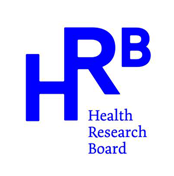With the ever-increasing volume of research, finding ways to address the research-to-practice gap – the gap between knowledge creation and its use by healthcare practitioners and policymakers – is now more important than ever. This gap between knowledge creation and its use has important implications for our research: one frequently cited estimate is that it takes around 17 years to turn 14% of original research to the benefit of patient care.
Knowledge brokering is a burgeoning field that seeks to address the research-to-practice gap. A knowledge broker is essentially an intermediary person or organisation who/that develops relationships and connects producers and users of knowledge. It recognises the need for a more proactive and strategic approach to knowledge dissemination, rather than relying on the assumption that publication alone is the road to change. A knowledge broker can work in three interrelated ways, as Meyer (2010) outlines: as knowledge managers, linkage agents and capacity builders.

As part of CHErIsH – the Choosing Healthy Eating for Infant Health study – funding was provided to appoint and train a knowledge broker, under the HRB Knowledge Exchange and Dissemination Scheme (KEDS). This article outlines some of the key lessons learnt to date in this evolving role, as detailed under the following points:
Communicate the value of knowledge brokering: stakeholders need to understand first the value of and rationale for knowledge brokering; otherwise, they may view it as a superfluous activity. Be clear at the outset what knowledge brokering is and how it can add value for researchers, practitioners and policymakers.
Talk to your knowledge stakeholders: begin by identifying the needs of both your knowledge users and makers. Try to identify what is the issue, where is the gap. This information can be gathered in a range of ways – from informal chats to more formal interviews or focus groups if you want to add to the evidence base in this area.
Identify barriers and facilitators to knowledge use: take note of the particular barriers and facilitators to knowledge use facing producers and users of research. These may differ according to the different disciplines: for example, in preliminary research carried out for CHErIsH, healthcare practitioners cited busy workload, time pressures and the broad scope of their work as barriers to knowledge use; researchers highlighted the growing volume of research, the credibility of the source and time pressures as significant barriers.
Use an appropriate framework or template to guide your knowledge brokering plan: be strategic in your planning rather than adopting a scatter-gun approach. There is a growing body of literature on theories, models and frameworks that can be used in this field (e.g. see Strifler et al, 2018). The Knowledge-to-Action model (Graham et al, 2006) is a particularly popular model, and its outer ‘Action cycle’ can be used to guide the knowledge brokering process.
Tailor strategies towards your particular audience: consider the particular strategies that will work best with the particular target audience – there is no one-size-fits-all approach. For example, face-to-face exchange at a convenient time may work better for healthcare practitioners versus policy briefs or factsheets for policymakers.
Never underestimate the value of face-to-face exchange: personal contact and exchange is an important tool in the knowledge brokering toolbox. In feedback from the CHErIsH knowledge exchange meetings, for instance, the opportunity for face-to-face engagement and chance to give feedback/address problems were cited as the top two advantages by healthcare practitioners and researchers taking part in these meetings.
Monitor effectiveness: think about ways to gauge the effectiveness of your knowledge brokering plan; otherwise, how will you know if it is working. Examples could include the number of policy briefs distributed; the number of hits on your website or followers on Twitter; documenting any change to policy or practice that has resulted from your efforts; or gathering feedback from stakeholders on how they found the process.
Consider the time factor: devise a timeline for your project. Different audiences and approaches may need to be targeted or applied at different timepoints – for example, contacting policymakers
later on in the process when you have findings from a pilot or feasibility study. Also, remember that knowledge brokering takes time – for example, time to build relationships and trust with your knowledge stakeholders, time to synthesise and communicate findings from the research, and time to build capacity in knowledge brokering itself.
Dr Susan Calnan is a post-doctoral researcher at the School of Public Health in UCC and has been involved in knowledge brokering activities over the past year.

